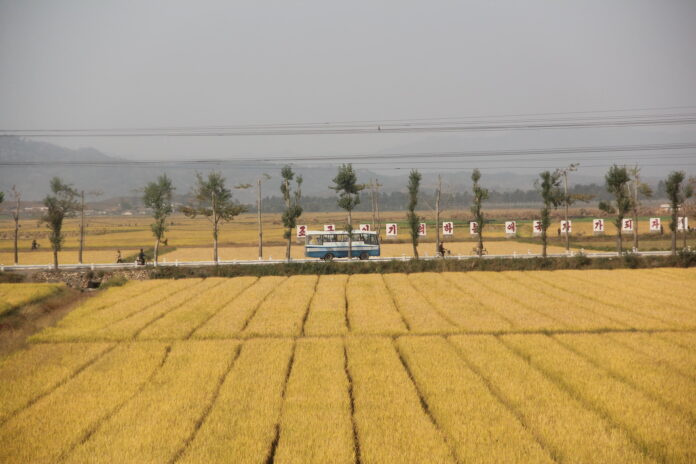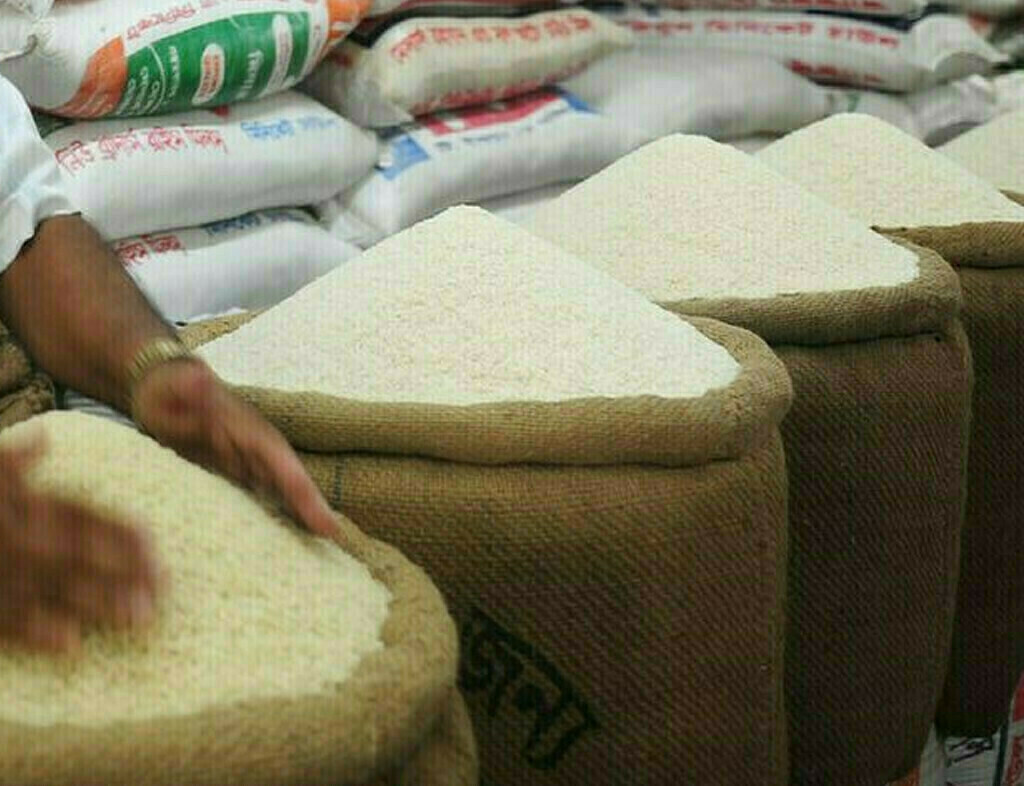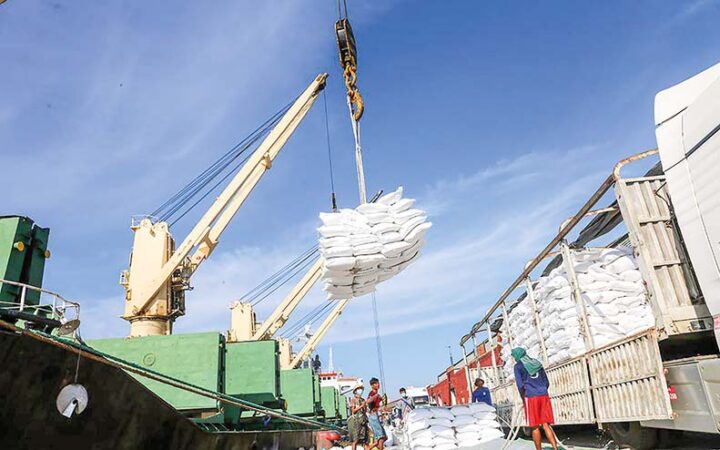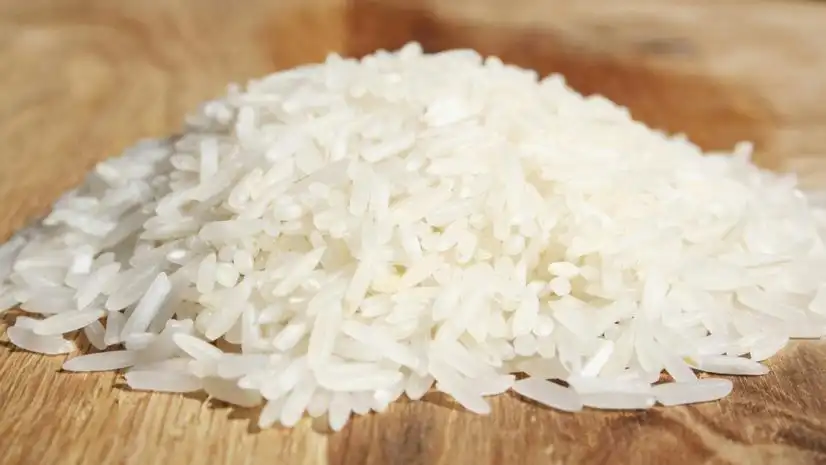Tags
N. Korean rice and corn market prices rise slightly toward end of 2023
Grain sellers and ordinary people — with the notable exception of farmers — have been purchasing large amounts of rice and corn recently, multiple sources told Daily NK.

A photo taken in October 2014 of a bus driving through North Korean fields with the message “Let’s become a patriot remembered by our homeland” in the background. (Lawrence Wang, Flickr, Creative Commons)
North Korean market prices of rice and corn recently rose slightly after a prolonged decline that began with the start of the harvest in September.
According to Daily NK’s regular survey of market prices in North Korea, a kilogram of rice in one market in Pyongyang cost KPW 4,800 as of Dec. 24.
The price represents a 2.1% increase from Dec. 10, when a kilogram of rice in Pyongyang cost KPW 4,700.
A similar trend was in evidence in other regions, too. Rice cost KPW 4,820 a kilogram in Sinuiju as of Dec. 24, 2.1% more than it cost two weeks earlier.
The price increase was a bit higher in Hyesan, where rice cost KPW 5,000 a kilogram as of Dec. 24, 3.5% higher than it cost on Dec. 10.
The price of corn — which had fallen for three straight months since September — also began climbing. For example, the price of corn in one market in Pyongyang was KPW 21,000 a kilogram as of Dec. 24, 5% higher than it cost on Dec. 10.
The corn price climbed faster in Hyesan, as it did with corn. Corn cost KPW 2,300 a kilogram in Hyesan’s markets on Dec. 24, a 9.5% increase from Dec. 10, when it cost KPW 2,100.
Hoarding by the public causes rise in prices
The recent U-turn in rice and corn prices after a continuous slide following the start of the fall harvest appears connected with mass purchases of grain by the public.
According to multiple Daily NK sources inside North Korea, grain sellers and ordinary people — with the notable exception of farmers — have been purchasing large amounts of rice and corn recently.
North Korean grain prices usually reach their yearly low in early-to-mid December following the end of the fall harvest, so many people use this time to hoard grain.
Daily NK reported in mid-December that, after grain wholesalers purchased large amounts of rice, prices of the grain in South Hamgyong Province climbed above KPW 5,000 a kilogram after falling into the mid-KPW 4,000 range.
The wholesalers are hoarding rice purchased on the cheap in order to resell it at higher prices when prices climb in early 2024.
While North Korea’s government has promoted last year’s “unprecedented bumper crop,” critics note that the increase in agricultural production fell short of expectations, yielding disappointing post-harvest decreases in grain prices.
Cho Chung-hee, the director of Good Farmers’ research institute and an expert on North Korean agriculture, told Daily NK in a phone conversation that “2023’s harvest was better than the previous year’s, when yields were poor due to natural disasters like typhoons, but that doesn’t mean it was good enough to be called a bumper crop.”
Cho also predicted that “the fall in market prices due to the harvest might not be that significant compared to years past because even though North Korean food production increased last year, it will still fall far short of what North Koreans need.”
North Korea is estimated to have produced 4.82 million tons of food last year, including rice and corn, according to a report on the country’s estimated food production in 2023 by South Korea’s Rural Development Administration. The report was based on information about weather conditions, damage from pests, supplies of fertilizer, and satellite imagery.
The total food produced by North Korea in 2023 represents a 310,000-ton increase from 2022, but it still falls short of the 5.50 million tons the World Food Programme predicts North Koreans will need.
Translated by David Black. Edited by Robert Lauler.
https://www.dailynk.com/english/n-korean-rice-and-corn-market-prices-rise-slightly-toward-end-of-2023/Published Date: January 3, 2024






